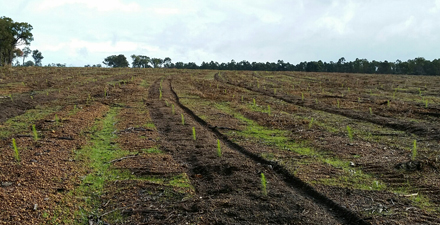The South West Timber Hub recently released the findings of a report into private forestry which explored the barriers to landowners as the WA plantation estate continues to diminish. Source: The West Australian
The report was commissioned by the Hub as a result of investment in Australian forestry plantations coming to a standstill, particularly in Western Australia.
This comes at a time when demand for timber and fibre products is rapidly increasing.
The rate of take-up of private farm forestry — landholders investing their own funds to establish softwood planting on their land — is low.
The Forest Products Commission’s Annual Report 2018-2019 stated that 4807ha of softwoods were harvested in that year, with only 1000ha being planted annually.
Of that 1000ha, very little derived solely from private investment.
According to South West Timber Hub project manager Wendy Perdon, without significant change, the trend will only compound into the future.
“WA will be left to rely on timber imports rather than responsibly supplying our own timber needs through local sustainably managed plantations,” Mrs Perdon said.
“This is why we commissioned the Private Forestry Engagement Strategy, to review the barriers to landowners planting trees on their properties and to develop targeted engagement strategies.
“This Engagement Strategy has been deliberately prepared placing the private and corporate landholder, farmers or landowners, as central to an understanding of the relative interest and likely take-up of private forestry.”
Existing growers, key stakeholders and influencers were consulted in this report and suggested that independent, valid and reliable information on which to base a 30-year investment in pines was hard to obtain and often not available.
Donald Burnside from DG Burnside & Associates was one of the researchers who worked on the report.
“The report started back in June, we did a lot of research of the literature on what’s happening in the South West now in terms of land,” Mr Burnside said.
“What was very helpful for us was looking at what was happening in other jurisdictions in terms of farm forestry and in particular who was supporting their work and helping them.
“We found that some of the people we spoke to, who are advising farmers, didn’t know anything about the industry at all.
“What we are suggesting now is that the people that have the information work with those people who provide support to farmers and make sure they have good quality information they can put in front of their clients.”
The executive director at the Forest Industries Federation WA, Melissa Haslam, said the industry was going to keenly seek ways to address the gaps that have been found in the report.






